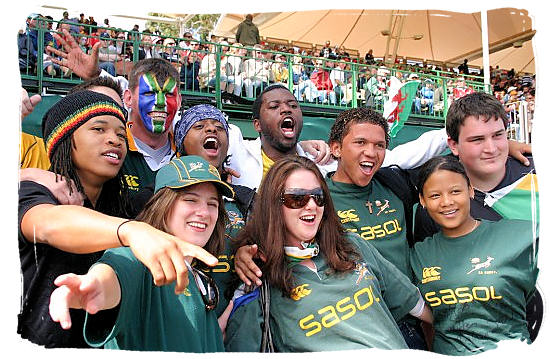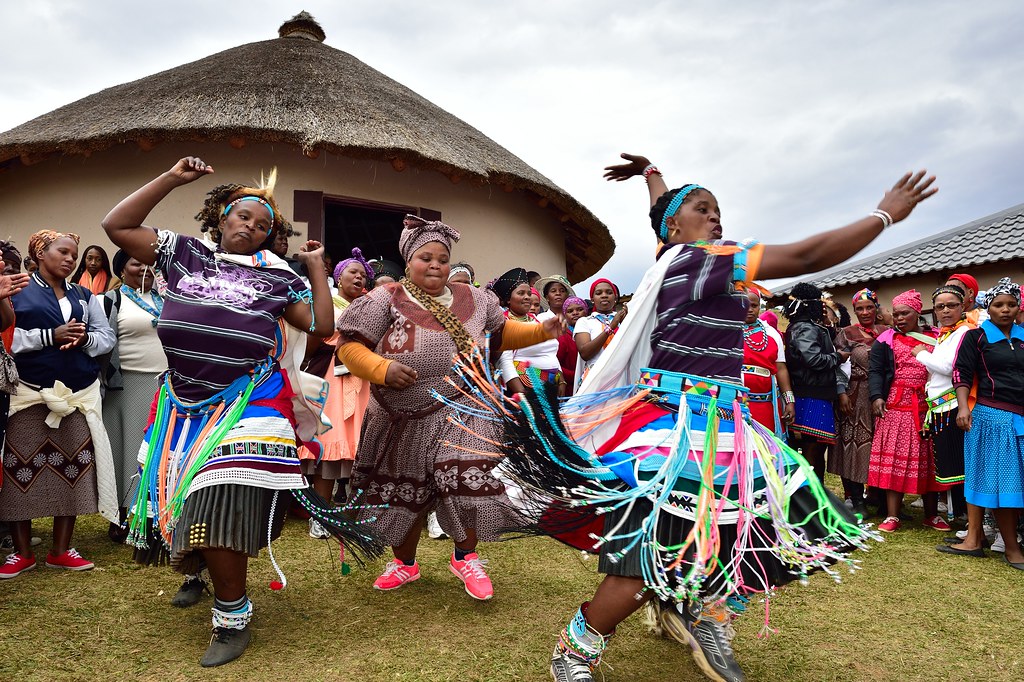The 6-Second Trick For South African Culture Today
Table of ContentsThe Definitive Guide for South African Culture TodayThe smart Trick of South African Culture Today That Nobody is DiscussingThe Buzz on South African Culture TodayNot known Details About South African Culture Today The 8-Second Trick For South African Culture TodaySouth African Culture Today - An Overview
An issue of importance in Zambian towns is the passing away of loved ones. All participants of the town placed money, time and effort together for the interment of the deceased.Throughout the grieving period; men stay outside your house and the females remain inside your home of the deceased. After speaking regarding the dead, the town walks to the location of funeral to claim their last farewells. Songs and dance is an extremely vital aspect of the Zambian culture. The numerous tribal units have their very own dance types; nonetheless, makishi is usual amongst all tribes.
Facts About South African Culture Today Uncovered
When it pertains to music, drums are used one of the most, with a range of drumming ceremonies. In Zambia, majority of the people are Christian; Protestant and Roman Catholic. There are little teams of Muslims and Hindus, with the remainder complying with neighborhood native tribal ideas.

South African heritage and society is immensely diverse, and includes various groups of people who each have their own practices and beliefs. Having such a variety of individuals and cultures is what makes South Africa so unique. In truth sense of the phrase, we are a rainbow nation.
Making it the 7th on the list of nations with the most Portuguese individuals in it outside of Portugal. Portuguese is not just a society, however it is also a language and a nationality. Portuguese individuals stem from the country of Portugal in Europe, however, due to Portugal (like many various other nations in Europe) checking out the globe and conquering other nations throughout the 15th 20th centuries, South Africa has what we call Portuguese South African's living in it.
Little Known Facts About South African Culture Today.
Amongst the prominent attributes of the topography is a plateau that covers virtually 2 thirds of the center of the country. The plateau complex climbs towards the southeast, where it climaxes in the Drakensberg variety, part of an escarpment that divides the plateau from the coastal locations. The Drakensburg consists of Champagne Castle, the highest possible top in the nation.
The region north of the Witwatersrand, called the bushveld, slopes downward from eastern to west toward the Limpopo River, which develops the global border. The western area of the plateau, the middleveld, additionally descends in the direction of the west and differs in elevation in between the highveld and bushveld. Between the Drakensburg and the eastern and southerly coastline, the land comes down to the sea.
Nearer the coast there is a low-lying level called the eastern lowveld. Southwest of the plateau the country comes to be considerably a lot more arid, paving the way to the hostile desert of the Great Karroo, approached the east by the reduced, much better watered plateau of the Little Karroo. Dividing the completely dry southern interior from the sandy coastal of the southern coastline and West Cape is an additional variety, the Langeberg.
The Ultimate Guide To South African Culture Today
The country's racially, ethnically, and politically separated background has actually generated national and subnational symbols that still function as symbols of the country, and others signs that are approved just by specific groups. The monuments to white settler conquest and political dominance, such as the Afrikaner Voortrekker ("leader") Monolith in Pretoria and the Rhodes Monument honoring the British colonial realm builder and Cape head of state Cecil Rhodes, remain sectarian symbols.
The initial modern-day occupants were the San ("bushman") hunter-gatherers and the Khoi ("Hottentot") peoples, who herded animals (South African culture today). The San might have been existing for hundreds of years and left proof of their presence in thousands of ancient cavern paintings ("rock art"). Bantu-speaking clans that were the ancestors of the Nguni (today's amaZulu, amaXhosa, amaSwazi, and vaTsonga peoples) and Tswana-Sotho language teams (today's Batswana and Southern and Northern Basotho) moved below east Africa as early as the fifteenth century

The two previous republics of the Orange Free State and Transvaal (South African Republic) were established by Afrikaner next page settlers that defeated and dispossessed the Basotho and Batswana. Lesotho would certainly have been by force integrated into the Orange Free State without the expansion of British security in 1869. The ultimate unification of the nation arised from the South African Battle (18991902) between the British and both Afrikaner republics, which lowered the country to ruin at the start of the twentieth century.
Afrikaners historically considered themselves the just true South Africans and, while approving full citizenship to all citizens of European descent, refuted that condition to individuals of shade till the autonomous shift of 1994. British South Africans maintain a sense of cultural and social connection to Great This Site Britain without compromising their identification as South Africans.
The 9-Second Trick For South African Culture Today
The variety and fragmentation within ethnic groups and the balance of stress in between those groups during the twentieth century prevented interethnic civil problem. While intergroup stress over resources, privileges, and political prominence continue to be, those conflicts are as likely to match Zulu against Zulu as Zulu versus Xhosa or African against Afrikaner.
From colonial India, British merchants and administrators brought the curved metal ornamental roofs and slim shoelace job pillars that still epitomize the terraces of cottages in towns and cities throughout the country. Holy places add an essential architectural element even in the smallest towns. Along with the rising steeples and timeless stonework of Afrikaans Dutch Reformed churches, Anglican churches, synagogues, mosques, and Hindu temples offer range to the religious building scene.

Butchering and the brewing of conventional cereal beer are necessary in safeguarding the engagement and goodwill of the ancestors that are taken into consideration the guardians of great lot of money, success, and well-being. Indian neighborhoods keep their indigenous culinary customs and use them on Islamic and Hindu routine and ceremonial occasions. Afrikaners and Coloured people collect at weekends and special events at multifamily bbqs called braais, where community bonds are strengthened.
Since this was the key financial venture of both black Africans and white colonists, conflict between those groups fixated the ownership of grazing land and animals. In 1867, the biggest ruby down Check Out Your URL payments on the planet were discovered at Kimberley in the west central area. The wealth from those fields helped finance the exploitation of the greatest gold reef worldwide, which was found on the Witwatersrand in 1886.
Excitement About South African Culture Today
This led to misconceptions and purposeful misrepresentation in the transactions of white settlers and federal government authorities with African principals during the colonial duration (South African culture today). In the establishment of African gets, some facets of public and primarily "tribal count on" land period were maintained, and even in white backwoods, kinds of public period were still practiced in locations with African areas
After the democratic transformation of 1994, programs for land restitution, redistribution, and reform were set up, however progress has actually been slow. The white minority still regulates eighty percent of the land. Following agricultural land intrusions in Zimbabwe, the Department of Land Matters has vowed to speed land redistribution.